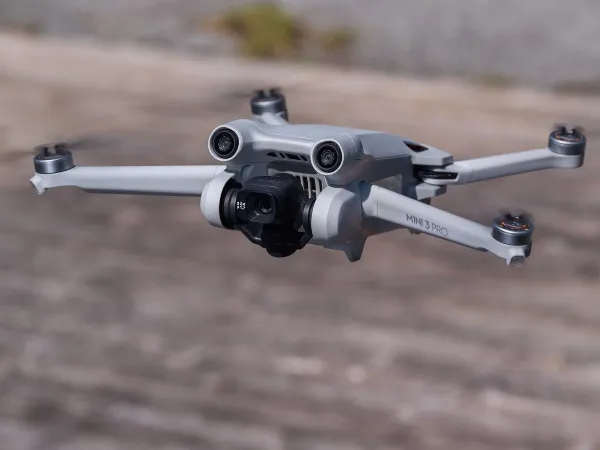Are Drones Hard to Fly: Demystifying the Myths and Realities

The rise of consumer drones in recent years has sparked a growing interest in aerial photography, recreational flying, and even commercial applications. Drones have become more accessible, but one question still lingers in the minds of many potential enthusiasts: Are drones hard to fly? In this comprehensive article, we will explore the complexities of flying drones, debunk common myths, and provide insights to help both beginners and experienced pilots navigate the world of unmanned aerial vehicles.
Contents
The Evolution of Drones
Drones have come a long way from their military origins. Today, consumer drones are equipped with advanced technology, making them easier to fly than ever before. Key factors that have contributed to their evolution include:
1. GPS Technology
Modern drones are often equipped with GPS systems that provide accurate positioning and navigation. This means that even novice pilots can rely on the drone’s ability to maintain a stable hover and follow preset flight paths.
Auto Amazon Links: No products found. No products found. http_request_failed: A valid URL was not provided. URL: https://ws-na.amazon-adsystem.com/widgets/q?SearchIndex=All&multipageStart=0&multipageCount=20&Operation=GetResults&Keywords=Are+Drones+Hard+to+Fly%3A+Demystifying+the+Myths+and+Realities|Are+Drones+Hard+to+Fly|Galaxy+s23|SAMSUNG+Galaxy+S23+Ultra+5G|SAMSUNG+Galaxy+S23+Ultra+Cell+Phone&InstanceId=0&TemplateId=MobileSearchResults&ServiceVersion=20070822&MarketPlace=US Cache: AAL_28329984c1a39e463fdc547c106e1bb4
2. Automated Features
Consumer drones are packed with automated features like obstacle avoidance, return-to-home functions, and auto-landing capabilities. These features reduce the risk of accidents and make flying a drone less challenging.
3. User-Friendly Apps
Many drone manufacturers offer user-friendly mobile apps that provide intuitive controls and real-time video feeds. These apps simplify the piloting experience, allowing users to focus on capturing stunning aerial shots.

Debunking the Myths
Myth 1: Drones Are Difficult to Control
One of the most common misconceptions is that drones are hard to control. While they do have a learning curve, most drones are designed to be user-friendly. In fact, with a little practice, even beginners can master the basics of drone flight.
Myth 2: You Need a Pilot’s License
For many consumer drones, you don’t need a pilot’s license to fly them. However, regulations may vary by country, and it’s essential to research your local laws and comply with them. In some cases, you may need to pass a basic knowledge test to operate a drone legally.
Myth 3: Flying a Drone Requires Technical Expertise
Although some drones offer advanced features that require technical knowledge, the majority of consumer drones are designed for ease of use. Basic flight modes, such as takeoff, landing, and hovering, can be easily managed by anyone.
Learning to Fly a Drone
1. Choose the Right Drone
Selecting the right drone is the first step in ensuring a positive flying experience. Consider factors such as your skill level, intended use, and budget. Entry-level drones are typically easier to handle and cost less, making them ideal for beginners.
Auto Amazon Links: No products found. No products found. http_request_failed: A valid URL was not provided. URL: https://ws-na.amazon-adsystem.com/widgets/q?SearchIndex=All&multipageStart=0&multipageCount=20&Operation=GetResults&Keywords=Samsung+Galaxy+s23|Is+drone+flying+a+good+hobby%3F|SAMSUNG+Galaxy+S23+Ultra+5G|Drones|SAMSUNG+Galaxy+S23+Ultra+Cell+Phone&InstanceId=0&TemplateId=MobileSearchResults&ServiceVersion=20070822&MarketPlace=US Cache: AAL_321efb74018a69a95be0be4f7556c9c7
2. Read the Manual
Before taking your drone to the skies, thoroughly read the user manual. This document provides essential information about your specific drone, its features, and safe operation.
3. Start with a Simulator
Many drone manufacturers offer simulators that allow you to practice flying on your computer. This is a risk-free way to learn the basics of drone flight and gain confidence.

4. Understand Your Drone’s Features
Familiarize yourself with your drone’s features, including the controller and any accompanying apps. Learn how to use the GPS system, adjust camera settings, and activate automated flight modes.
5. Practice in Open Spaces
When you’re ready to fly your drone for the first time, choose an open area with minimal obstructions. This reduces the risk of collisions and allows you to get comfortable with the controls.
6. Master Basic Maneuvers
Start with simple maneuvers like taking off, hovering, and landing. Gradually progress to more advanced actions, such as flying in a circular pattern or capturing smooth video footage.
7. Learn About Safety Regulations
Understanding and adhering to local drone regulations is crucial. Respect no-fly zones, altitude restrictions, and privacy considerations. Ignoring these rules can result in legal consequences and accidents.
Advanced Drone Flying
For those looking to take their drone flying skills to the next level, here are some advanced tips:
1. Experiment with Camera Settings
To capture stunning photos and videos, explore your drone’s camera settings. Adjust parameters like exposure, shutter speed, and ISO to achieve the desired results.
2. Plan Your Flights
Before taking off, plan your flight path to ensure you get the shots you want. Apps like AirMap or Kittyhawk can help you identify no-fly zones and provide real-time weather information.
3. Fly in Different Conditions
Practice flying your drone in various weather conditions and lighting scenarios. This will enhance your piloting skills and allow you to adapt to different environments.
4. Maintain Your Drone
Regular maintenance is essential to keep your drone in optimal condition. Clean the propellers, inspect the motors, and update the firmware to ensure safe and smooth operation.
Conclusion (Are Drones Hard to Fly)
Are drones hard to fly? The answer largely depends on your willingness to learn, practice, and adhere to safety regulations. While there is a learning curve, modern consumer drones are designed to be accessible and user-friendly. With the right approach and a commitment to responsible piloting, anyone can enjoy the thrill of flying a drone and capturing breathtaking aerial imagery. So, whether you’re a beginner or an experienced pilot, there’s no reason to be intimidated by these remarkable flying machines. Embrace the challenge, master the art of drone flight, and embark on a journey filled with stunning views and unforgettable moments.
FAQs: (Are Drones Hard to Fly)
Q1: Do I need any special skills or training to fly a drone?
A1: While you don’t need special skills or training to get started with drones, it’s essential to read the user manual, start with a simulator, and practice in open spaces. This will help you build the necessary skills to fly safely and capture great footage.
Q2: Are all drones equipped with GPS systems and automated features?
A2: Not all drones have GPS and advanced automated features. Entry-level drones may have fewer features than higher-end models. It’s essential to research and select a drone that suits your needs and skill level.
Q3: Can I fly a drone in my local park or backyard?
A3: It depends on your location and local regulations. Some parks and public spaces may allow drone flights, while others may have restrictions. Always check with local authorities and adhere to any posted rules and regulations.
Q4: Do I need a pilot’s license to fly a drone?
A4: For most consumer drones, you do not need a pilot’s license. However, regulations may vary by country and drone weight. Some places require passing a basic knowledge test or obtaining a drone pilot certificate for certain operations.








